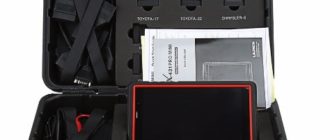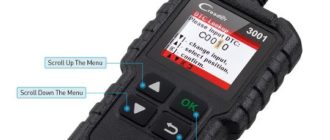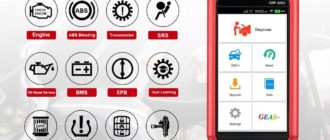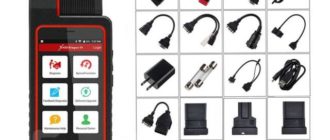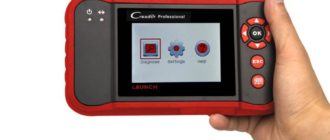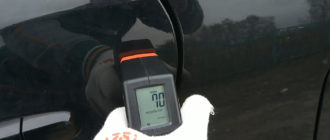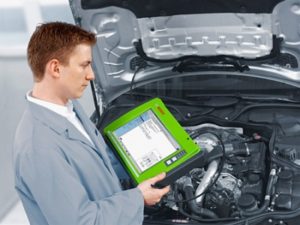
Cars have been equipped with computers to control its systems (electronic control unit) for a long time.
They can collect data from sensors, detect breaks in circuits, read fault codes, etc.
For this reason, a diagnostic scanner has been invented to allow the diagnostician to obtain information from engine control units or other onboard systems.
What kind of scanners are there?
Dealer devices
Every car manufacturer has its car diagnostic scanner which is supplied to the car dealer for car maintenance.
Such scanner is called a dealer scanner and has the most complete capabilities to work with a particular car brand. If it is Toyota, the scanner is working with Toyota only, if it is BMW, the scanner is working with BMW only.
Such devices are quite expensive, not counting their Chinese copies. Chinese clones will cost much cheaper than an official device, but you have to be aware of all risks when using such a device.
Here is the list of some dealer devices on the example of several manufacturers:
- Mercedes – Mercedes SD connect;
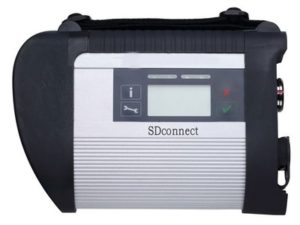
- BMW, Mini Cooper – BMW ICOM, INPA;
- WV/AUDI/SEAT/SKODA – VAG COM KKL for cars manufactured until 2004, VCDS for later cars (Vasya Diagnost), VAS PC 5054a;
- CITROEN/PEUGEOT – Lexia 3;
- Nissan/Infinity – Nissan Consult 3;
- Toyota/Lexus – Toyota Mongoose (Chineeese copy of Mini VCI);
- Ford/ Mazda – VCM / VCM 2;
- ВАЗ – ДСТ 10Н, Scanmatik 2.
For small car repair and service stations, original dealer scanners are not affordable, so there are multi-brand scanners available.
Multi-brand devices (for all car brands).
The idea of creating such a device was grasped by Chinese manufacturers. They bought dealer devices, hacked into encrypted communication protocols and copied them into their scanners. Such diagnostic scanners can do almost as much as dealer ones. It’s worth clarifying the word “almost” here, as it’s just not real to copy everything.
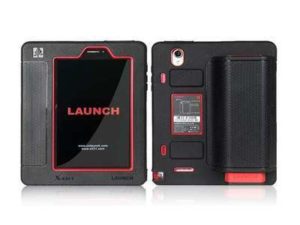
Dealer scanners continue to make software improvements and updates almost every week, and with a multi-brand scanner you just do not get this opportunity.
That is, the Chinese manufacturers buy original dealer scanners, hack them and collect it all in one device (for example, the Launch company). Yes, this is illegal, but this is China.
Important! Not every OBD connector implies an OBD protocol connection! Example: you may not connect to a right-hand drive Toyota with a regular OBD scanner such as ELM327.
Structurally, diagnostic scanners can be divided into portable devices and software.
Portable scanner is a stand-alone diagnostic device with screen, control buttons and connection cables. Most often these scanners have a slot for their memory cards, which contain software.
In order to update the software, just take out the card and copy recent updates or car corrections to it (Toyota Intelligent Tester II, GM Tech 2).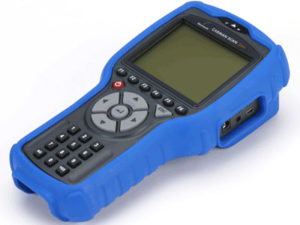
Software scanner is a diagnostic adapter (cable) that is connected to a PC and to the car. Further diagnostics are performed in special diagnostic software on your PC.
Currently, most of these scanners are connected to a laptop or PC via a USB cable, and the other end of the cable is connected to the car via the OBD connector.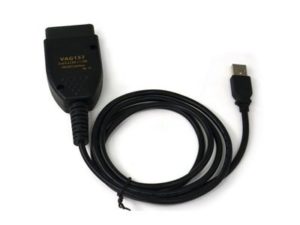
What can you do with a diagnostic scanner in the car?
Next, we will consider what functions the scanner has for the car and what to expect from it. Keep in mind that a scanner is a device for receiving diagnostic information, and the information you receive serves as “food for thought” and for identifying the cause of the malfunction, not as a guide to action.
Example: Oxygen sensor – too rich mixture. — There is no need to replace the sensor, but you should investigate why the mixture is rich.
Functions and capabilities of diagnostic scanners:
- Identification of the engine control unit. Engine system information, chassis VIN number, etc.;
- Engine parameter data stream (data stream). Temperature, ignition advance angle, injection time, mass air flow, correction factors etc. are displayed here;
- Reading error codes;
- Freeze Frame. This function records the engine parameters when the fault occurs (rpm, mileage, temperature, air flow, etc.). It gives you an idea what conditions the engine was operated under and at what moment this error occured;
- Erasing fault codes. On older cars, this procedure could be done by removing the battery terminal. Now the manufacturers began to transfer the information on faults to the control unit memory into non-volatile area. This is to ensure that the fault codes are not erased when changing the battery;
- Control of actuators (nozzles, relays, ignition modules, idle air control valves);
- Performing adaptations. For example, adaptation of the throttle flap. Go to a certain section in the scanner software, press “Adapt throttle flap”: at this moment, at idling speed, the control unit changes the throttle flap positions to adjust its correct position;
- Control unit programming – available for dealer devices and on some advanced modern multi-brand scanners.
Conclusion
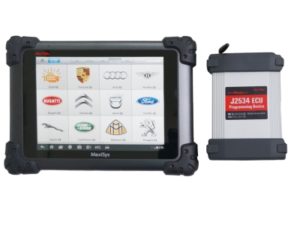
So, we learned that there are dealer scanners for a specific car brand, and multi-brand scanners for all car brands.
We also found out that by design they can be both stand-alone devices and PC-based.
You should understand that by using Chinese copies of dealer devices you perform diagnostics at your own risk (then there will be no one to blame).

